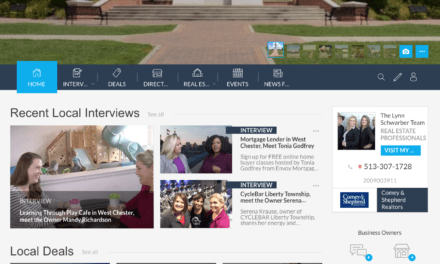To invest or not to invest in my real estate website? That is a tough question in 2017 for real estate professionals.
And to even think that you maybe should NOT invest a lot into your website might come as a shock to some of you reading this…especially if you have already invested a lot of time and money into your website.
I mean, we’re in the digital age. You need a website, right?
Overall, yes, you do need a website. We’re not saying you don’t. However, do you need to spend over $1000 per year on it? Probably not!
See, there are simple and professional websites that check all the boxes that you NEED to check, without spending more than $50 per month.
There are some slick sales people out there who peddle websites, IDX, SEO, and CRMs, who will make you believe that you NEED stuff that you don’t, so hopefully, this blog helps you figure out the age old question.
‘To invest, or not to invest in my website’
Summary
If you’re getting leads from your website that direct increase sales and give you 3X or more ROI on the investments you make into your website, keep moving forward with investing in your website; in fact, maybe invest more!
However, if you are NOT getting leads that are converting into real customers and money, you should reconsider your investments of time and money into your website, and DEFINITELY, read this article in full.
This full blog will outline the top reasons why your website is failing to convert visitors into new leads and customers for your real estate business.
#1 Nobody Really Cares if You Have an IDX Website
For some reason, people new to the real estate industry are pre-conceived with the notion that they NEED an IDX based website to run their business.
Now, we are not saying that it’s wrong to have one; however, it’s not a game changer to have it, or not have it.
Just think about it. There are thousands of websites a homeowner can visit to search for homes, and let’s be objective here: compared to the big portals, they all suck because the companies that make them have thousands of dollars to spend on it.
On the flip side, the big portals like Zillow, Trulia, Realtor.com, have the best user experience and user interface because they have millions of dollars to spend on it.
So if you’re a homeowner and you want to search for homes, where will you go? The big real estate websites of course. Now, that doesn’t mean the homeowner finds their realtor there. They are just doing their research on these websites.
Ok, so the first problem with IDX websites is that the user experience and user interface is amateur compared to the big players. That’s ok, though.
The second issue – they are all identical in terms of content! Therefore, in order for your website to rank significantly higher for a local property on a search engine, you need to generate tons of backlinks to your domain.
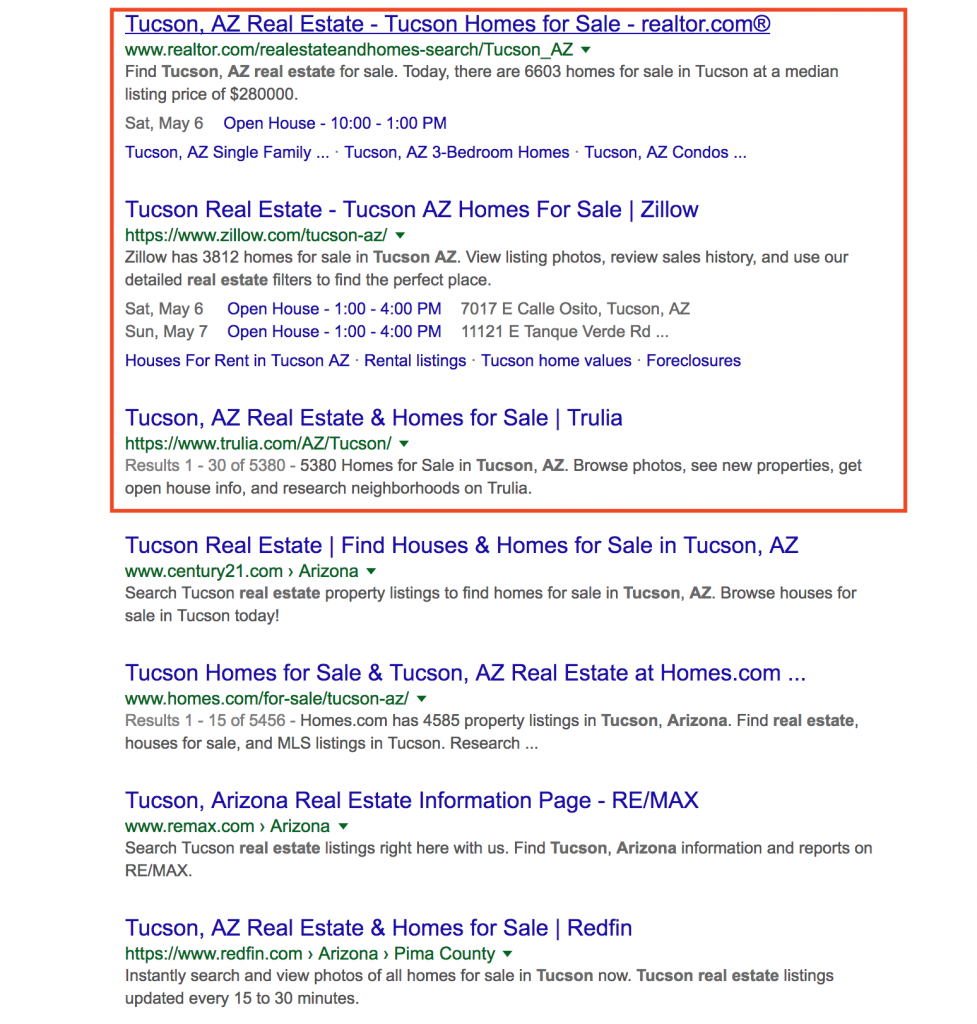
Think about this for a second: big brands like Zillow and Trulia are ALSO competing for those property keywords, and they have mega millions to beat you. Therefore, they are going to outrank you. Again, it’s ok because 60% or more of homeowners pick their realtor because of pre-established relationships, or referrals from friends, or because they follow you online and think you are credible, trustworthy, and hardworking.
However, what this reality simply shows a realtor is that IDX is not going to significantly increase or decrease your business.
Now, the good news is you CAN rank higher in the search engines for local property searches…it’s just not through IDX.
In fact, you can rank higher than Zillow and other top authority real estate websites following these 5 steps!
How to Rank High for Local Property Searches – A 5 Step Blueprint
Step 1: Create a new page on your website and name it, “[property address] For Sale in [Neighborhood, City, State].
Step 2: Write out your own 500 – 700 word description of the property. Include things to do in the area, top schools nearby, as well as details about the property itself.
Step 3: Attach a few pictures throughout the article.
Step 4: Post It.
Step 5: Share the page on your social media feeds.
If you follow this 5 step action plan your property listing will likely rank on the first page quicker than had you not taken these steps.
Now, If you include local content in your blog, over time, this blog will climb to the top of the page for very specific local keywords.
The reason being is your property page has unique content paired with the IDX content that is on all your competitor’s pages. Therefore, the search engines value your “property page” (i.e. blog about a property) more than “just a property page” on an IDX (and even a portals website sometimes).
Bottom Line: people don’t need to go to your specific website to see a listing, so don’t think having an IDX will generate you new business. Offer people unique content that no one is talking about online. Offer value, and you will receive value.
#2 You Are Not Targeting The Right Organic Traffic
Over 90% of people start their home search online. When people are looking to move into a particular neighbourhood they are likely going to search about the local area.
Imagine this scenario…
Let’s say someone types in the keyword “180 University Avenue Homes For Sale”.
Keywords like these are often searched by real estate professionals.
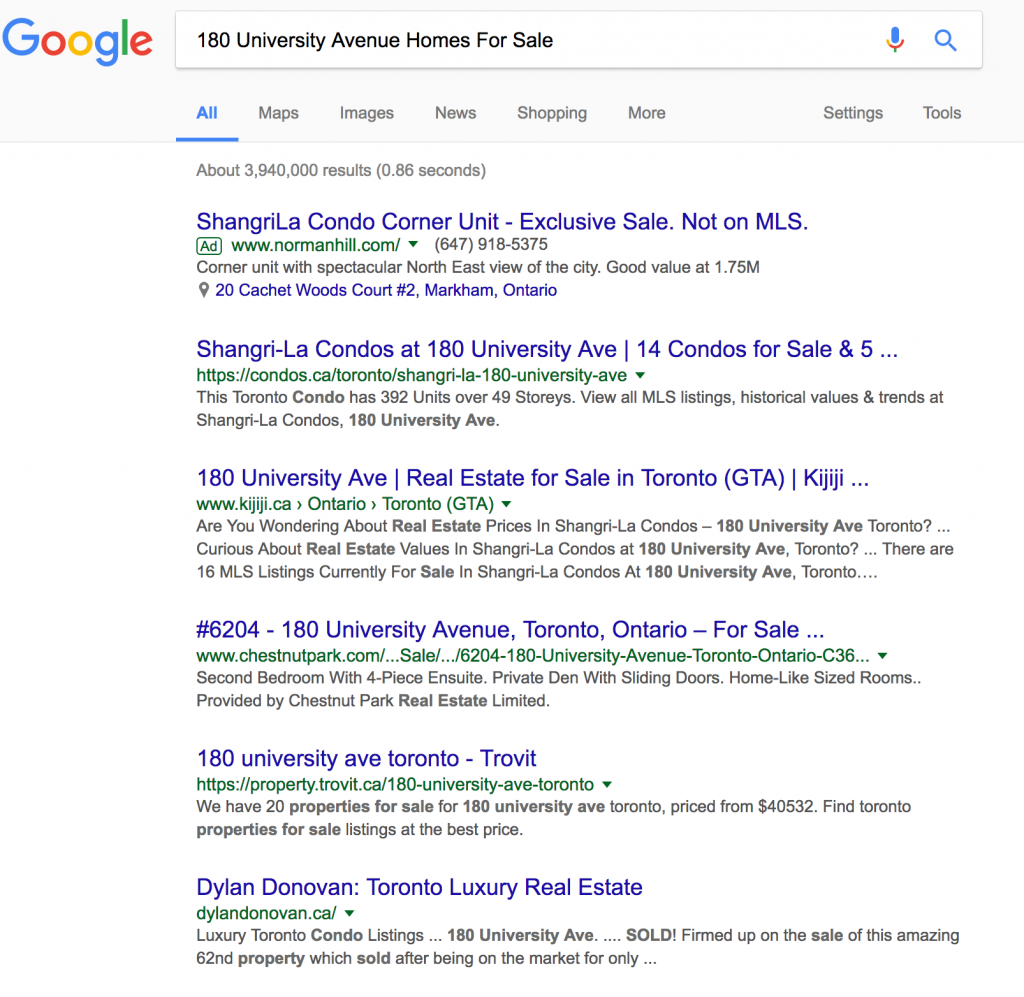
If someone is moving to downtown Toronto, they want to learn about what the city has to offer, particularly in the neighborhood they’re thinking about moving to. Literally, the stats are, “the average homeowners completes 19 local keyword searches.” And we can promise you, it’s not all information about properties! 🙂
People are looking to learn about events, businesses, schools, parks, public services, demographics, and more. Therefore, these are the keywords that you need to target and write blog posts about in order to target potential home buyers.
For example: think about this keyword “best schools in peel region Mississauga”
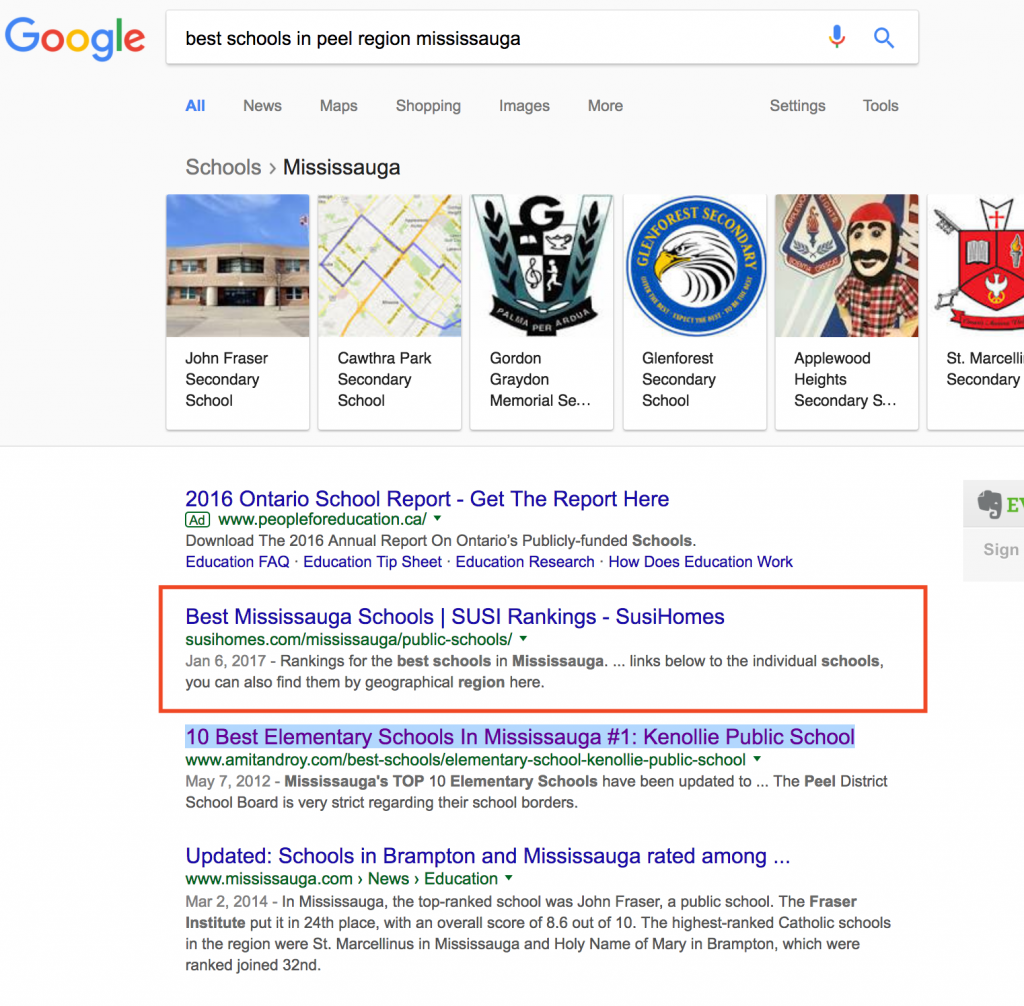
How many of your competitors have content about this on their website, compared to the keyword “180 university avenue homes for sale.”
And it’s because you post content about niche searches, that people STILL search for, that will allow you to WIN! Yes, it’s on a smaller scale, but if you try to target big and broad keyword search terms that thousands of competitors have content on, you won’t win at all. And wouldn’t you rather win on a small scale than lose on a big scale?
So, here are some content ideas that you can steal from us so you can have more success online.
List: 10 Things To Write About On Your Real Estate Website
- Places to eat, shop and dine
- Top things to do in your local area
- Blog posts about upcoming events
- Create a few blog posts about schools in your area
- Write about the transit system in your area
- Review local businesses in your community
- Case study of a real estate investment in your target area
- Interviews with influential people in your area
- List aggregation posts: Best Places For Bowling, best late night cheap eats etc.
- Create a local neighborhood guide for people in and outside your target area
#3 You Do Not Have Any Call To Action To Capture Website Visitors
A real estate website without a proper call to action on every single page is like a baseball player showing up to the game without a mitt.
If you want to win on your website, you NEED a proper call to action on every single page.
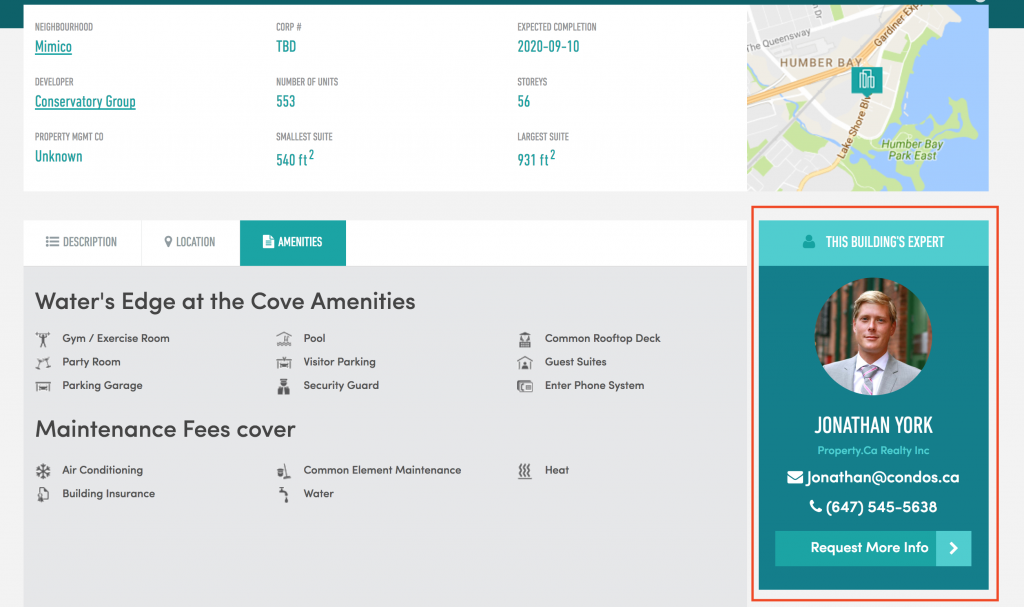
And here’s the opportunity…the majority of your competition is showing up to duels without a gun, so you have the opportunity to WIN!
Now, let’s assume that you are getting some local organic traffic. The next question that you should ask is how do you convert this traffic into new leads?
If you have just a simple ‘Contact Us’ page, you are missing out on so many opportunities because the majority of users do not fill contact page forms out. And if you’re like us, you probably this your contact page is amazing. Unfortunately the data has spoken.
Therefore, you need to grab the attention of the user on the page that they land on, every time!
Just look at your bounce rate. I bet it’s over 50%. Therefore, the majority of people go to one page and leave, therefore you NEED to have a call to action on EVERY page. Even if your bounce rate is as good as googles (33%), then 1 in every 3 people leave right away, and that is still significant.
What Is A Call To Action?
A call-to-action (CTA) is a message that motivates the user to take a particular action on your website. This message can come in the format of an image, a button, text or any combination of these elements.
Call-To-Action Best Practices
In order to convert the maximum percentage of website traffic into new leads you need to follow these CTA best practices:
Positioning
The position of the call-to-action is absolutely vital in growing your conversion rate of visitors into leads.
The Three Best Positions Are:
Top Bar – A big bar that runs across the top of the website with a text and a button to a dedicated page. Use can use a software like HelloBar to get this effect.
Sidebar – If your website traffic is generated mainly through high ranking blog posts then you should go with the sidebar call to action. You can create your custom image and place it on the sidebar. Remember that the image should have some sort of a button.
Floating Bottom Right – This position is great if your CTA involves asking some sort of a question, or you’re trying to trigger a conversation with your visitor (ie Live Chat). There’s a real science behind this position, and in short, it’s because of how a human’s eyes examine something – they finish in the bottom right.
Coloring
The second most important thing about any CTA is the color. The overall color has to be a sharp contrast compared to the general color theme of your website. Take a look at how Shopify uses a blue sidebar CTA with a green button. Test different colors and find out how your conversion rate is affected.
See the example below where a different color increased lead conversion rate by 21%
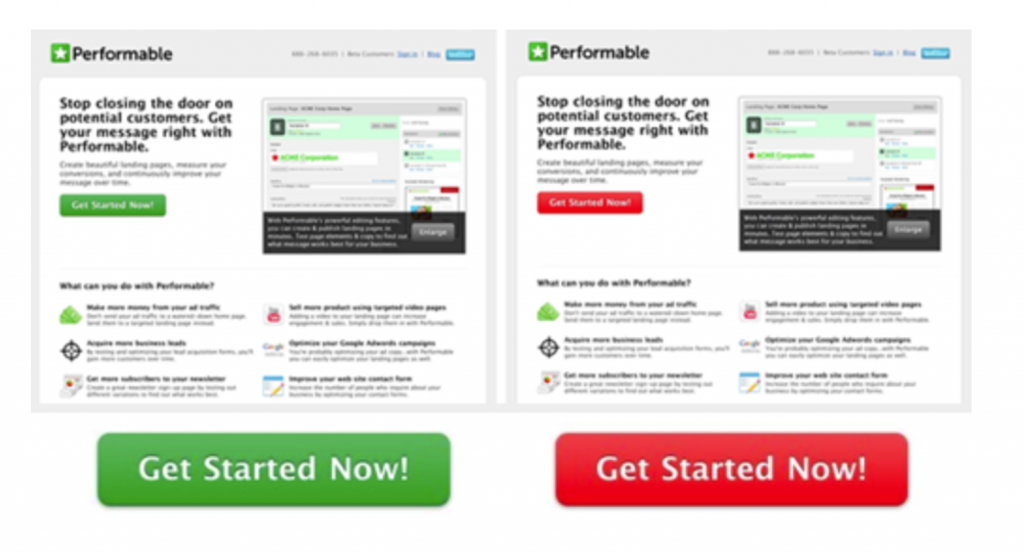
Source: Impactbnd
Context
The actual context of your call to action is the third piece of the puzzle. Often, many sites go with a generalized CTA. For example, “Find out how much your home is worth” is on every page.
Insight: Generalized CTAs are not the best idea if you are looking to convert more visitors.
Why? Because your CTA needs to be tailored towards the context of the content on a specific web page. A call to action targeting an article for a home buyer has to be different from one targeting sellers.
TOOL: There are lots of software out there like OptinMonster (for WordPress), LeadIn etc. that lets you create specific CTA’s for specific pages.
#4 You Do Not Have Any Local Content On Your Website
Although we talked about this topic in general, at the beginning of our article, we still needed to emphasize the importance of local content in establishing yourself as an authority in your target area.
After all, the 2017 report of buyers and sellers said the NUMBER 1 REASON why a homeowner picks a realtor is because they feel they have the most local market knowledge compared to the competition.
Here are other advantages of creating local content:
- It helps your pages rank higher in Google for local keywords
- You are providing value to the people on your website
- People likely to move into your area will search through your content and discover your website
- Local content allows you to build your personal real estate brand.
Take a look at this example below.
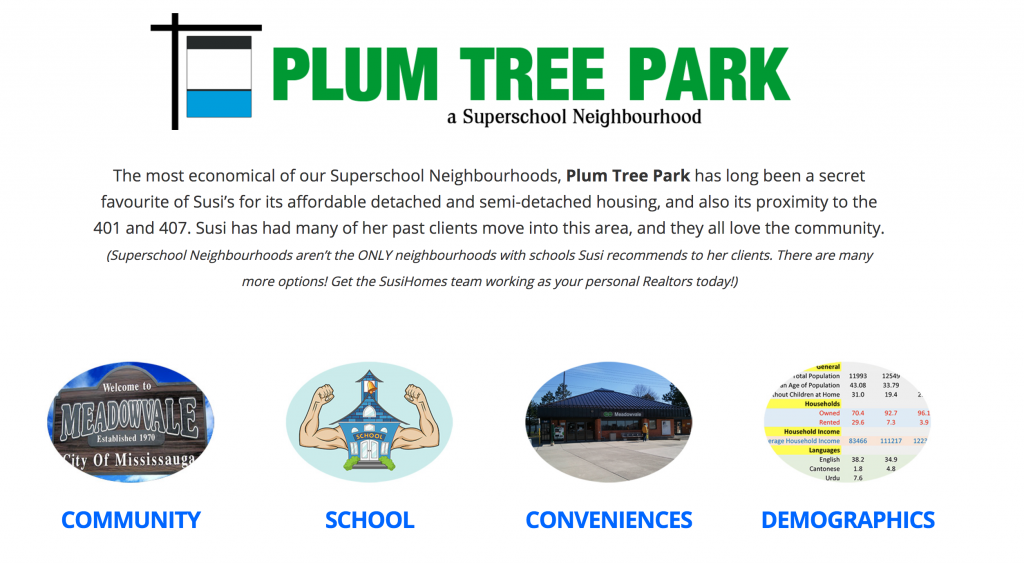
#5 Your Website Is Not Optimized For Search Engines
Writing great content and making sure that your website is optimized for search engine rankings are two different things.
Imagine buying a Ferrari and putting the low-quality gas in it. Sure, it will work, but you invested in something that CAN deliver you high performance. Why short change yourself? Go all the way! Commit to high performance all around, and put the good gas in it.
If you are going to invest in creating content on your site, don’t short change your investment. Go all the way. Invest in on and off site SEO and get the most out of your content!
6 On Page SEO Tips to Keep in Mind
1) Structure your content with proper heading tags.
2) Increase interlinking between different web pages on your website
3) Optimize your images for search engines
4) Use SEO optimized title tags and description
5) Implement structured snippets
6) Sign up with a reliable web hosting company to make your website run fast
Bonus: We have a complete guide for optimizing your website for Local SEO.
#6 Your Website Design Is Obsolete
Yes, design plays a key role in how users interact and behave on your website.
Check out these 3 mind-blowing stats:
- Judgments on website credibility are 75% based on a website’s overall aesthetics
- First impressions are 94% design-related
- Choosing a specific blue over some other hues amounted to an additional $80 million in annual revenue for Bing.
Clearly, the above stats suggest that design is something that you should not ignore on your website. If you have even done some blogging then you must be familiar with the term, “content is king”.
However, in 2017, content alone won’t be enough. Your website needs to look modern in order to generate trust with those first-time visitors.
A well-designed website also encourages a visitor to stay longer which improves your overall SEO (on-page time factor).
Bonus: How a corporate brand used 2 cartoon characters to explain their product. [Redesign Case Study]
#7 You Do Not Portray Yourself Too Much In Front Of Your Audience
A local real estate website is really not about how many properties you are displaying on your homepage. It’s your first attempt in initiating a relationship with someone visiting your website.
You need to portray your best self in front of your target audience with pictures and videos of your community.
Your about me page should clearly explain why someone should choose you as their next real estate professional.
Here are some ideas of content to include on your about me page:
- Years of experience
- How you got started
- Why you love what you do
- Your hobbies and interests
- Client Testimonials
- Pictures of you, your family, and your friends
Check out this awesome about me section of a famous blogger.
#8 Your Testimonials Are Hard To Find
The real estate game is really about mutual trust and respect. This is why user testimonials are absolutely critical in building trust with first-time visitors.
Think about it…buying or selling a home is one of the most important decisions in a person’s life. It may seem normal to you, because you think about it all day, but don’t forget that it’s a MASSIVE DEAL to others.
Bottom Line: Testimonials help add credibility to you as a real estate professional.
Therefore, make sure that testimonials are present on every page on your website. Even 1 per page can help you increase leads.
However, ALSO have a page that shows ALL your testimonials because the longer that list is, the more credible, trustworthy, and competent you look.
Now here are a few recommendations to get the maximum impact from your testimonial page:
- Always add a picture of the person sharing a testimonial.
- Make sure that the text is clear and easy to read on the testimonial page.
- If you asked your clients to review your service based on a star or point rating, make sure that you showcase that.
- Brand your video testimonial videos so that people know who the video is all about.
- Include a call to action at the end of every video testimonials. An example call to action ” Book A Free Consultation” or ” Get A Free Home Valuation” right after a bunch of seller testimonials.
- If you sold someone’s home over asking always mention that
- Another good way to drive traffic to your website is to share your testimonials across multiple social media channels.
Conclusion
Ask yourself this question, “why did I build a website for my real estate business?”
And then ask, “am I spending time and money on things that don’t align with my goals?”
If you JUST wanted an online location to send prospects, where they can learn about you, contact you, and search for properties, then pay as little as possible for this goal.
If you wanted to generate lots of leads from your website, then make sure you are investing time and money to do it.
Far too many real estate professionals are stuck in no man’s land, where they don’t spend enough to win online, and they didn’t pick the most cost effective solution to check the basic boxes on their list of “what I need my website to do.”
Decide on what you want, create a realistic plan to get it (don’t underestimate effort), and then go execute that plan.



![16 Video Marketing Tips For Real Estate Professionals [2022 Edition]](https://localleader.com/wp-content/uploads/2018/05/video-tinkering-illustration-440x264.png)
